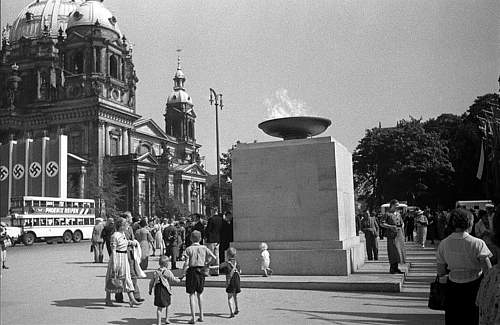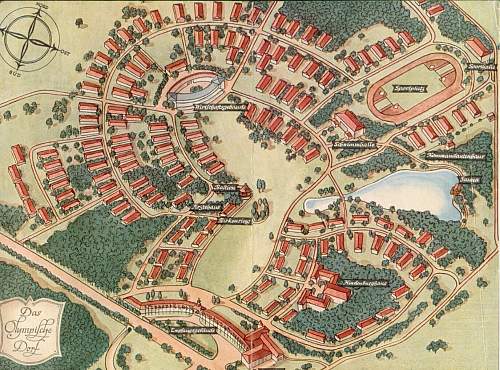-
 A strange ribbon bar, a captain and a village
A strange ribbon bar, a captain and a village
These days the first ribbon bar of this year 2023 has arrived in the collection and it’s not imperial, of course.

It’s a double ribbon bar with the ribbon of the KVK 2 Class with swords and with the ribbon of the Olympic Commemorative Medal 1936 (Deutsche Olympia Erinnerungs medaille 1936) but it has an incredible miniature with the relief of the obverse of the medal (the glockenturm – bell tower of the Berlin Olympic stadium with the Olympic rings on top, between the figure of the year 19 – 36) although without the German eagle. This makes me think that it would be a more appropriate miniature for a 1957 style ribbon, of course. But the ribbon bar is original, although that element baffles me. (BTW During the investigation, the doubt was resolved: it’s the medal miniature 1957 style)
-
12-10-2023 12:16 AM
# ADS
Circuit advertisement

-
-
-

Later, on July 31, 1936, Hitler established the German Olympic Commemorative Medal 1936 (Deutsche Olympia Erinnerungsmedaille 1936)

Deutsche Olympia Erinnerungsmedaille 1936

The full medal in wear
This medal was awarded to people who did not meet the strict requirements for the award of the Olympic Medal of Honor but who, nevertheless, contributed meritoriously to the preparation and holding of the 1936 Olympic Games. People who carried out work beyond the normal demands, regardless of whether they participated voluntarily, officially or contractually.

In a triple ribbon bar

tabstabs collection
The applications were submitted by the Reich Minister of the Interior, Dr. Frick. The prize included a certificate of ownership with a facsimile signature of Hitler. Members of the Wehrmacht awarded with it had to wear it on their uniform. The German Olympic commemorative Medal was awarded a total of 54,915 times.
The medal was round with a matte and shiny silver plating, they were made with different materials. There are medals made of bronze, copper, white metal, zinc and also iron.

Für Verdienstvolle Mitarbeit Bei Den Olympischen Spielen 1936 - For Meritorious Collaboration At The Olympic Games 1936
So doing a little research on this topic I discovered some curiosities about an essential place for any Olympics, and that must be prepared in advance of the games: the Olympic Village. I also focused at the figure of a Wehrmacht Hauptman who was responsible for making that place a success and for the sad circumstances of his death: Captain Wolfgang Fürstner.
I hope you enjoy.
-
-
-
-
-
-





 .
.












































Bookmarks